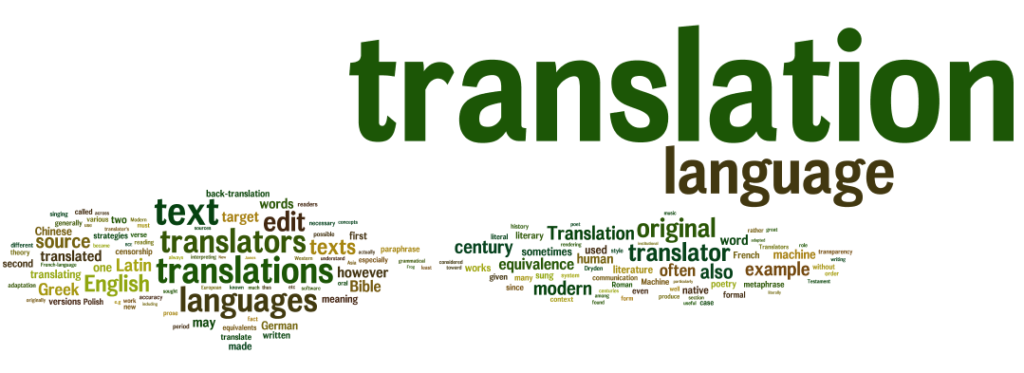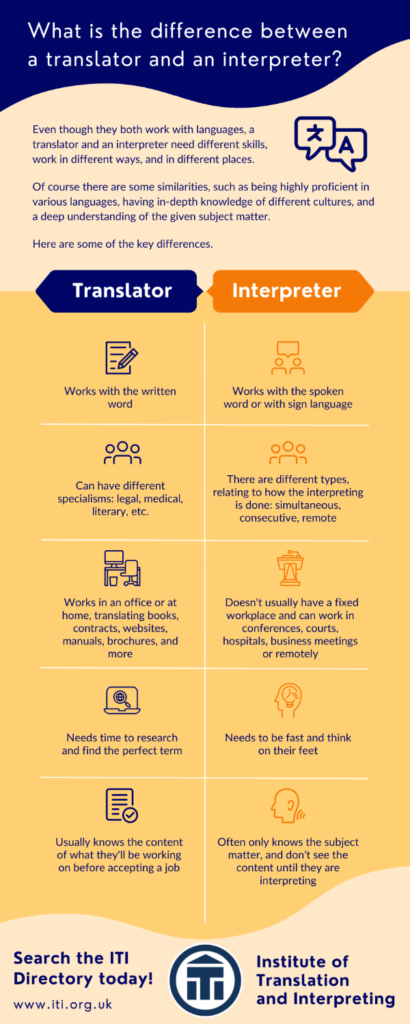The Ultimate Guide To Translating Content into German

No wonder digital translations have come to play a role more important than ever before. In the modern age of globalization, if you want to expand your growth, translation should be your priority.

German is among the top languages that can help you grow. It is the 2nd most popular language used in business and technology. It is one of the top languages for education and helps you connect with people around the globe.
In this blog, we will look at the importance of translating content into German. We will also outline the best ways to ace the language in your digital translations to connect on a global scale.
10 Tips for Translating Digital Content into German
Germany is an economic powerhouse and many of its native companies are global industry leaders. It’s no surprise that Germans have had an impact across the world and their language makes this knowledge more accessible.
German is one of the most widely spoken languages spoken in Europe. It is the most studied language because of the abundance of knowledge that Germans have passed on through generations.
While there are many awesome benefits to translating English to German language and converting your digital content into German, it’s not that easy! German is also known to be among the toughest languages in the world. So what are some of the best ways to translate content into German?
1. Begin with a clear objective
No one can ever begin a great task without a purpose. You can’t translate an entire website just for the sake of it! So before you go on to hire a translator and go into the details, take some time to understand what is the bigger goal. Are you establishing ties with current audiences? Or are you attempting to reach out to new ones? Do you want them to take a call to action or do you just want to spread informational content? How will the translated content be used? Who will benefit from it?

And there are many ways you can retrieve these pieces of information. It might be via an employee survey, a firm website, or a user guide. Ask a professional about the necessary resources to translate in a particular way. Obviously, it will also depend on your brand and your services. Once the goals are identified, document them clearly like translation guidelines, and keep them handy for your translation team or agency that you hire.
2. Always use a professional translator when translating into German
German is a tough language to learn and teach. No matter what kind of translation you have, you must hire a professional translator. This would mean hiring someone who understands both the target language and source language fluently. You may want to go for a native speaker but you must also make sure that they speak English fluently. While hiring a professional translator, there are a couple of things to keep in mind.

- Check their experience with German language translations. Consider the number of years and the number of projects they’ve done.
- Ask for work samples or a portfolio of work to check the quality of the translation. You can also give them a work assignment to see the turnaround time and their process.
- If it’s a translation agency, you can quickly check their online reviews. Having a translation agency is often better for German translations because you can trust a team more than an individual to give you quality work.
3. Keep your target audience in mind.
Translations are also very specific to the audience. Study details like age, profession, and gender. A professional translator will be careful of the tone and language used in the content.

Like many other languages, German is very different when spoken formally or informally. Depending on the level of formality, the tone of your text will shift. The translator should be clear if they can use a formal or an informal tone. Is slang allowed? Maybe yes, if you are talking to college students but never if you want to connect to businesses. Many terms and contexts can vary depending on the location and age of the target audience.
4. Pay attention to cultural nuances
Translation involves more than just changing words from one language to another; they also take into account the audience’s cultural background. A quality German translation conveys the original text’s meaning and content while presenting it in a way that German speakers are accustomed to.

If you are translating ads or home page content based on your audience, make sure to do some homework. Study the background data including the history and current affairs of the location your audience is at. Without being careful about the context, well-meaning phrases and sentences can have a wrong impact. Remember that great translations are not just about a great translator but also the correct interpretation.
5. Use simple, direct language when translating digital content into German
When we talk about interpretation, it’s always a good idea to make sentences concise. Simple, direct language is much easier no matter who you are talking to. Avoid long sentences with too many modifiers, unless you are sure your target audience can understand them.
Talk in an active voice. Avoid long, complex words or phrases unless they are necessary. Words can get really long in German! So even if you must use such words, ensure your UI/UX is carefully curated to fit the language.
6. Take special note of localization elements while translating
Be prepared to adapt your date format, e-dimensions, commerce currency, address format, and services like delivery options to the new nation. Translations simply take into account the act of converting a message from one language to another.

To let search engines know which languages your website is available in, particular coding is needed. Your site developer can use the language property in a few different places using a technique known as a hreflang meta tag, including the HTML tag and header section.
By including this information in both the original and localized versions of your website pages, you can quickly let search engines know which languages are available on your site. Localization makes sure that your digital website is seamless to the viewer in another location.
7. Create a glossary of industry terminology in German
Not just for technical translations, a glossary can be a savior if you are frequently taking up translation projects. This will save a lot of time and effort in creating high-quality translations.
This glossary of German terminology will define a variety of terms and phrases unique to your business and industry. This can also include words and phrases that are not translatable from English to German or vice versa.
Include the time required for a native German speaker who is familiar with your business and products to create and revise your glossary. Once this document is created, more information can be added. This can easily be shared in the case of a handover and also make proofreading easier.
German frequently borrows from and adapts English, especially when it comes to the internet. Your expert German translator can decide which terms need to be translated correctly and which can be anglicized. Making terminology decisions in advance keeps everything running smoothly and reduces the number of revisions needed.
8. Ensure there is room for text modification on your website
German is renowned for its compound terms, which serve as the equivalent of several smaller ones. These compound words can have more than 30 characters in length. The degree of text expansion should also be taken into consideration when translating English into the German language.
Many small words in English have much longer German equivalents. And other times, German can be very short for a comparatively longer English word. German words typically include 11.66 characters as opposed to 8.23 in English. This can result in up to a 35% increase in the text when translating from English to German.
Additionally, particular components in German translation, such as special characters, must be taken into consideration. The English alphabet is used in German, with the letters ä, ö, ü, and ß added. Ensure that these characters appear properly on your website and other digital platforms.
As you can understand, letters used in UI have a big impact on how a website is designed and how translated documents are displayed. With digital translation, you must be careful of this variation specifically in the German language.
9. Make sure to proofread the content after it has been translated
Probably the most essential step before your content goes live is to eliminate errors. After getting a professional opinion, ask someone from your target audience to read the content.
Take notes on how they perceive the translated content. Are they facing any difficulties? If yes, why and how can it be rectified? Proofreading and testing the translated content can be a great way to avoid any errors that may be overlooked during the process.

10. Conduct keyword research in German
Finally, it’s a must for SEO analysts to create data using German keywords related to your industry. No matter how good your translation is, there is no point if the content is not ranked.

However, many brand owners may not consider the factor that Germans may search for terms differently that English readers. This can lead to creating irrelevant content that may not serve the exact purpose.
Wrapping Up
German language translation can help you connect to global leaders and expose your brand to new opportunities. While English is the most popular language across the world, if you want to connect with the German-speaking population, you must translate English into the German language. Translating English into German will also convince your audience that you are serious about engaging with them. It will give you a competitive edge.
Now that you are aware of the necessary points, get ready for your first English-to-German translation. Onboard a translation agency and scale up your brand.
FAQs
Verify their background and experience while hiring German translators. Request work samples or a portfolio of work to evaluate the translation’s quality. Before employing someone, you can simply look up online reviews.
One of the biggest challenges in German to English translations is word order. In German, the verb is always second, whereas, in English, it can be first, second, or third.
Another challenge is translating idiomatic expressions. Germans tend to use a lot of idiomatic expressions in their everyday language, and these can be difficult to translate directly into English. Most importantly, German can be a difficult language to learn. It has a lot of rules, and many of its words are long and compound.
Yes! Many great online tools can help you with German to English translations. Some of our favorites include Google Translate, DeepL, and Bing Translator. These tools can all be accessed for free, and they’re pretty easy to use. However, they might not offer the same level of accuracy as an agency or a professional translator who comes with experience.
Latest Blogs
Learn how to rank on AI search engines like ChatGPT, Perplexity, and Gemini by optimizing your content for authority, structure, and relevance. Stay ahead in AI-driven search with this strategic guide.
Explore the best healthcare SEO services for your medical practice. Improve online visibility and effectively reach more patients in need of your services.
Discover top social media agencies specializing in banking solutions, enhancing financial services and driving engagement.
Get your hands on the latest news!
Similar Posts

Translation
5 mins read
All You Need to Know About Language Translation and Terminology Management

Translation
5 mins read
6 Reasons to Translate Content into German

Translation
5 mins read